As I step off the dock and onto the flat-top boat, a gust of wind whips my hair into my face and sends a chill down the back of my neck. I didn’t check the weather before my early morning flight from San Diego, and I’m suddenly glad I decided to wear combat boots. The sky over Tomales Bay is low-hanging, cloudy and bright and the bay itself still and steel grey, obscuring the ecosystem teeming just beneath the surface.
I’m here to investigate what’s considered by many to be an “ideal” sustainable protein. With so much research being put into artificial hamburgers, food replacements like Soylent and other lab-grown concoctions, it turns out one of the best ways to feed the planet lies between two shells, in an animal that humans have been eating since the beginning of recorded history. My captain for the day is Zane Finger, farm manager of Hog Island Oyster Company. He’s a second generation oyster farmer––his father, John, co-founded Hog Island back in 1983. Based in Marshall, California, Hog Island has become not only a day-trip destination for bivalve-loving bon vivants and a dining institution in San Francisco, but more importantly, a beacon of aquaculture sustainability.
Now occupying 160 saltwater acres in Tomales Bay, Hog Island got its start with a five acre lease and a handful of oyster seed, or spat. John Finger and former partner Michael Watchorn, both marine biologists with a deep love and respect for the ocean, decided to try their hand at oyster farming. Using a $500 dollar loan, a small stack of licensing papers and handful of spat––larval clusters also known as “baby oysters”––the duo grew their first oysters in Tomales Bay near the mouth of Walker Creek. Mike’s friend Terry joined up full-time after starting out just working weekends, becoming a founding partner. Today, John and Terry continue running the company. Over time, they perfected and tweaked their single seed “rack and bag” method, which involves a mesh bag suspended off the bottom between two pipes, like a stretcher. Single seed refers to the fact that spat comes from a hatchery, ensuring quality and uniformity. The suspension allows the oysters to grow separately from clusters, and the water movement around each individual shell brings a constant stream of phytoplankton to the oyster. It also helps the shell form a deep well ideal for slurping.

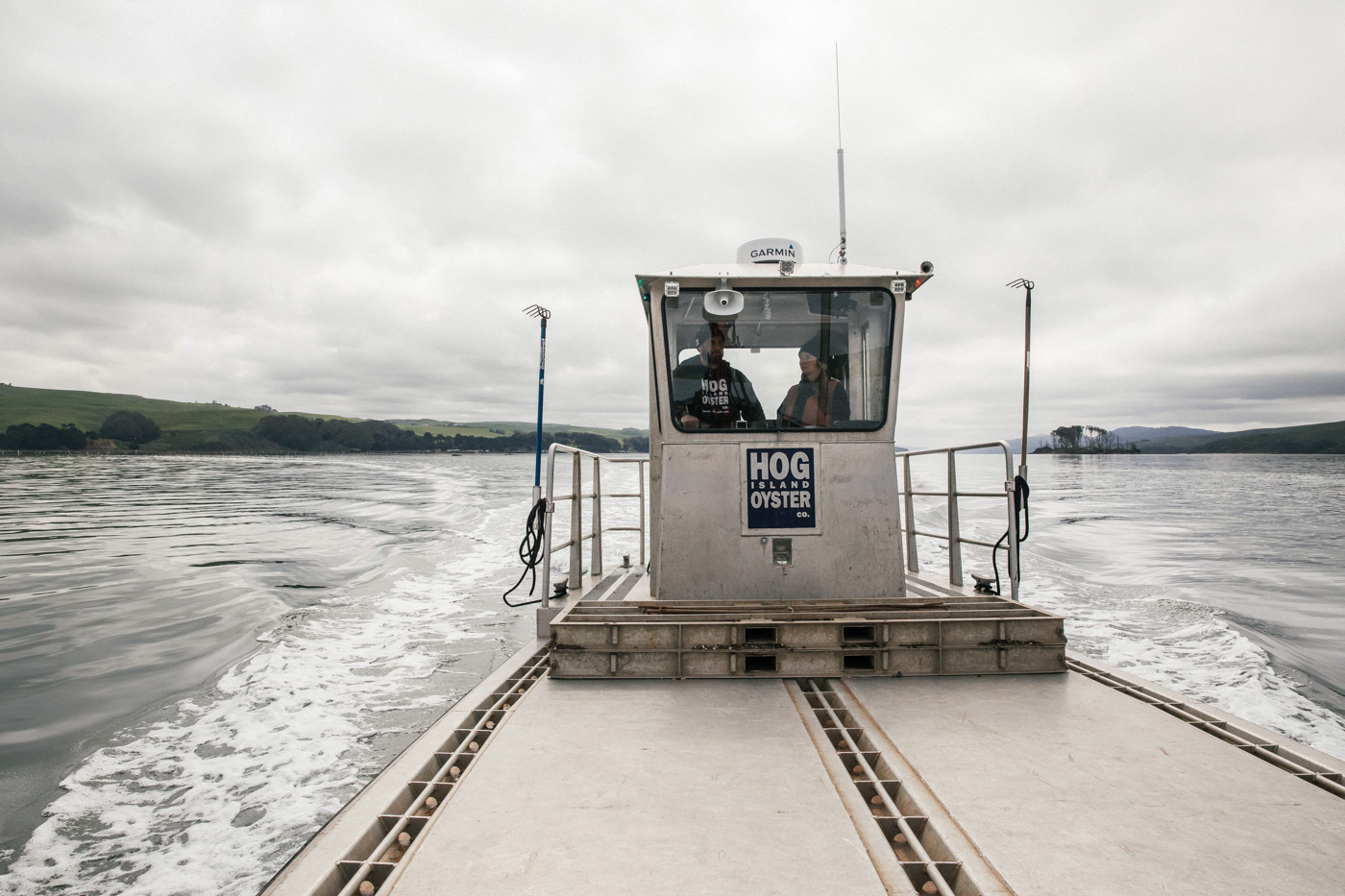
While Finger and Sawyer were growing their oysters and, therefore, their company, larger seafood enterprises continued their old practices of cultivating oyster clusters, which were dredged from bottom-bound oyster beds. Large-scale producers didn’t need to worry about shell quality since most of their product was shucked, the meat ending up in a jar or can. Certain oyster populations became overfished and others over-cultivated, resulting in unhealthy waterways with a lack of biodiversity and an increase in bycatch. Overall oyster quality was low, with mass production as the goal. Finger tells me that in San Francisco, this began during the gold rush, when people over picked San Francisco Bay’s healthy oyster reefs and killed off the remaining beds with runoff from gold processing.
From the get-go, Finger and Sawyer intended on growing Hog Island differently: expensive cultivation methods should, ideally, result in higher quality product and, therefore, will command higher prices and different consumption methods. Hog Island’s oysters were never meant to be shucked, canned and shipped off to a supermarket shelf––there was always a bayside picnic table, clam shack or rawbar in mind. This is exactly what ended up happening, and Hog Island’s growth was associated with the company becoming the thought leader in sustainable oyster aquaculture.
A Hog Island oyster is never far from food politics or ideology, which is necessary for its success, but it all points back towards Tomales Bay. Perched directly atop the San Andreas Fault––something I didn’t realize until the boat was far off the dock––at the confluence of Point Reyes National Seashore and a bevy of farmland, it’s an ideal environment for oyster farming, Finger tells me.
“We’re unique here. To have a bay that’s this pristine as close as it is to a major metropolitan region like the Bay Area is pretty rare. Part of this is part of the agriculture surrounding us, part of it is because of the park service. There is also a coastal upwelling, which brings very abundant algae blooms––good oyster food. We have a healthy mix of freshwater coming into the bay.”
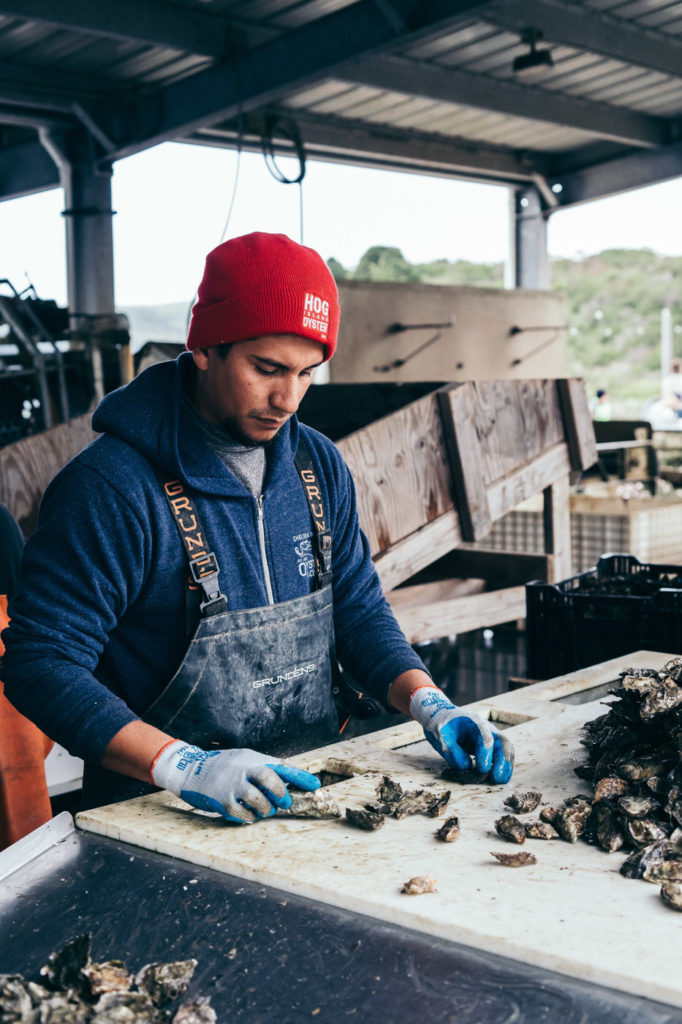


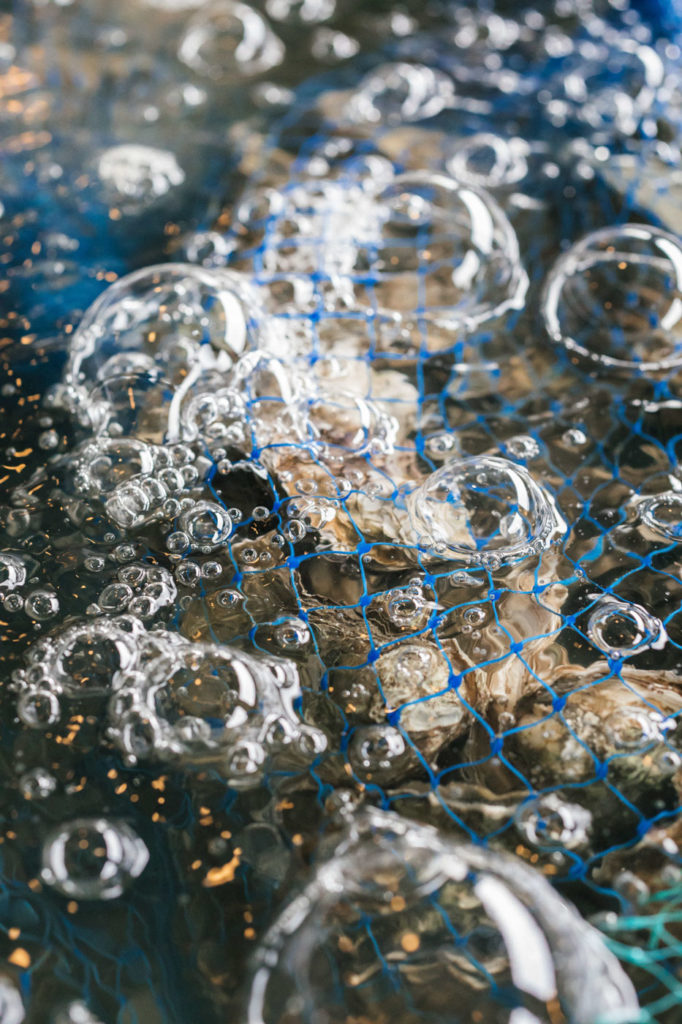
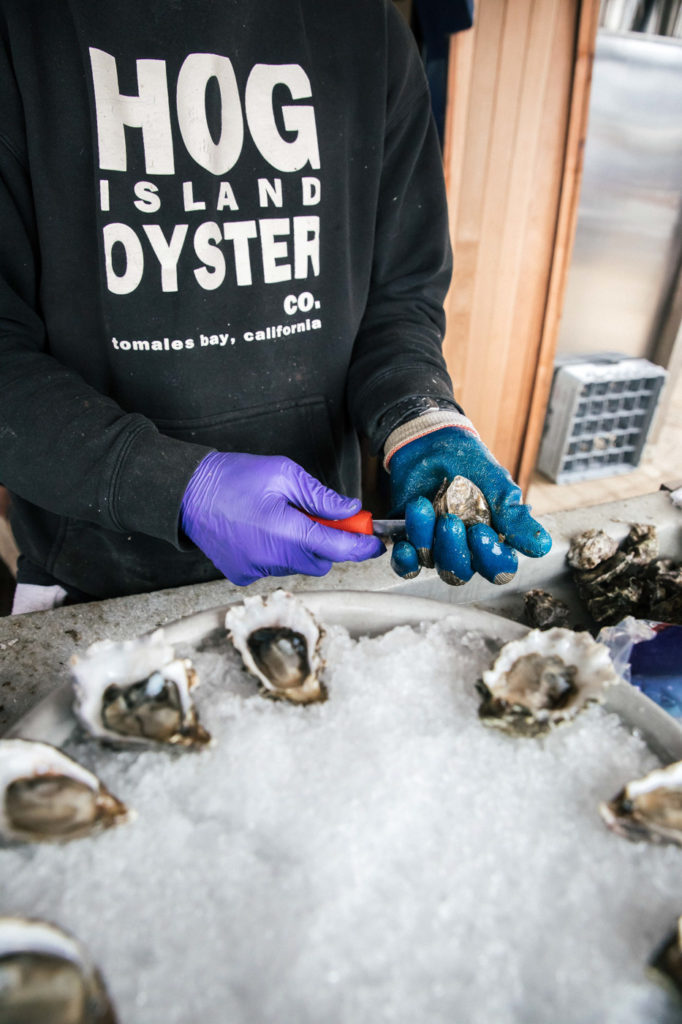
While these conditions dictated where the oysters were grown, it also was a no-brainer as to how they’d be grown, Finger says. It would be a crime to not respect such a fertile, abundant environment but the sentiment is much more personal than that.
“It’s a two-fold thing, really. First, it’s a sense of morality and responsibility. From that, the success of the business follows. Our livelihoods and the life of this bay depends on its cleanliness, as does so much else. I mean, I grew up on this bay, swimming in this bay, fishing on this bay, and i want my kids to be able to, too. I had a great childhood here and I love this place. I would love for it to stay the same.”
As if on cue, our talk is interrupted by a sudden need to cut the engine––we’re close to a small island filled with bird watchers. “We don’t want to interfere––we get a lot of cool birds out here, and lots of people come to see them,” Finger explains. We take a few minutes to appreciate the sun cracking through the clouds above a silent horde of “birders” nesting in the sand just a few hundred yards off the bow of the boat. Tomales Bay’s special ecosystem is hard at work and though I can’t help but feel like we’re all intruding; it’s obvious how lucky we are to be there.
Once we drift far enough offshore, Finger brings the engine to a soft hum and we motor away. We start to talk about the state of fisheries and the push towards sustainable aquaculture. Finger says that some fisheries are too far gone but others, with a lot of care, will be able to be replenished. For humans to continue to eat seafood, he thinks, ocean farming is essential. He also thinks the tide––no pun intended––is finally changing, thanks to a marriage of food trends and necessity. For oyster farming, in particular, being a successful and responsible farmer is confluence of factors, many of which depend entirely on responding to individual environments.
“One of the cool things about oyster farming,” Finger continues, “which makes the job very difficult but fun, is that everyone does it kind of differently. There’s not one set way to do it, probably because it’s newer. There are five different growers in Tomales Bay, alone, and we all use five different methods. Part of that might be because we’re all stubborn and we think our way is better than the other guys’, but part of that is––see this area right in front of us?” ––he gestures off the bow––“It gets different current and wave action than that area over there,” he says as he points out in another direction. “We have to adjust our methods and gear depending on those factors, so it can never be 100% the same.”
Befitting such a delicate process, what counts as unsustainable oyster farming is just as fickle, Finger explains.
“Look at fishing, first. If humans are taking more than what the fish population can keep up with, that depletes the population. If these oysters are breeding ‘X’ rate, and you take more, the population goes down––a simple equation. If farmers use bad practices, harm the environment around them and their oyster production falls, then they’ve killed both their business and the land around them. It’s a confluence of factors. There isn’t one method that’s wholesale unsustainable, but just not being a responsible environmental player overall is a good way to ruin it because oysters require perfect conditions to thrive.”
To that end, they’ve also become a partner with other oyster growers, both in the Bay Area and throughout the country. Hog Island recognizes that it doesn’t take much to throw their ecosystem off, so everyone needs to be in concert in order to succeed.
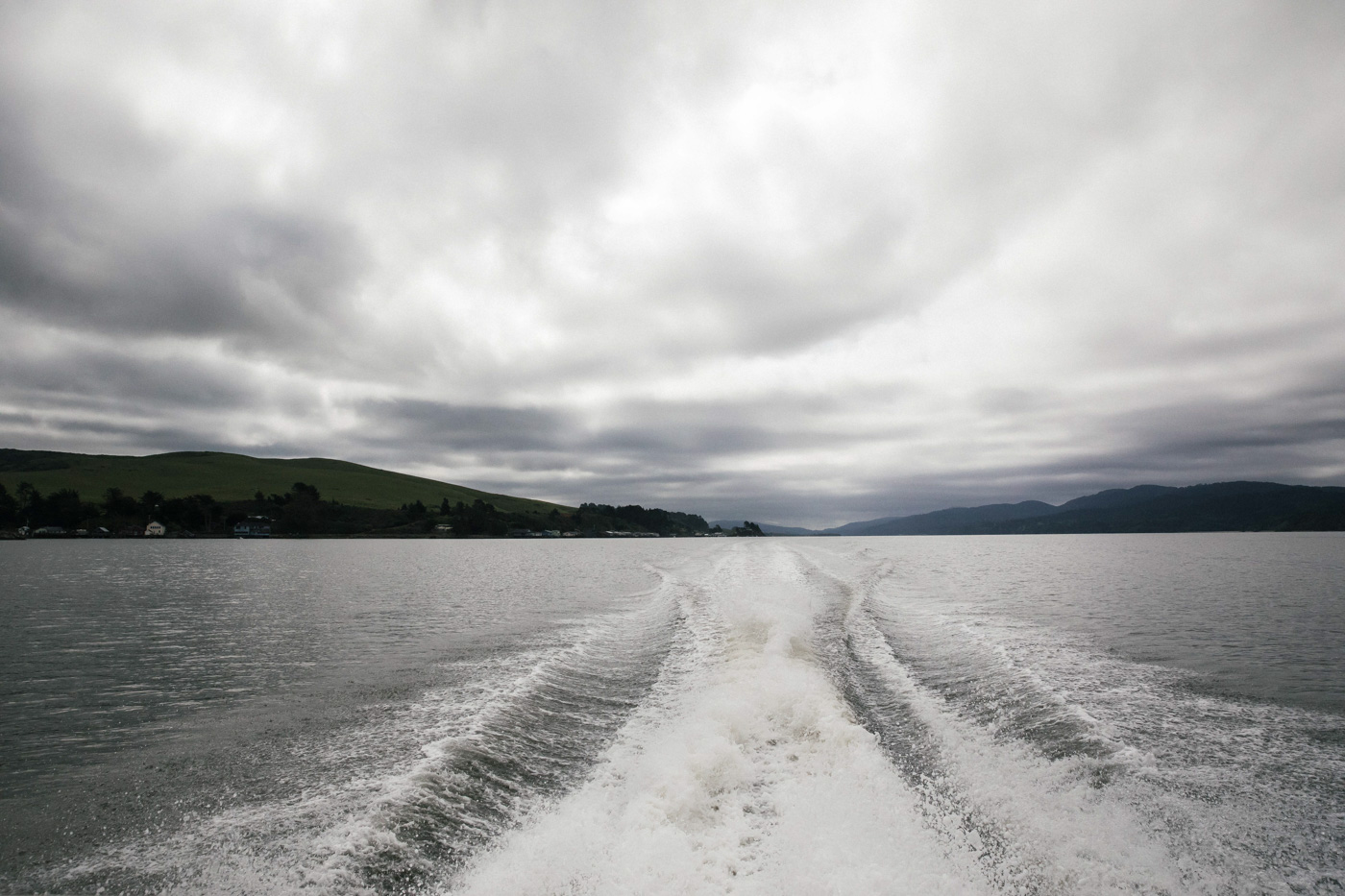
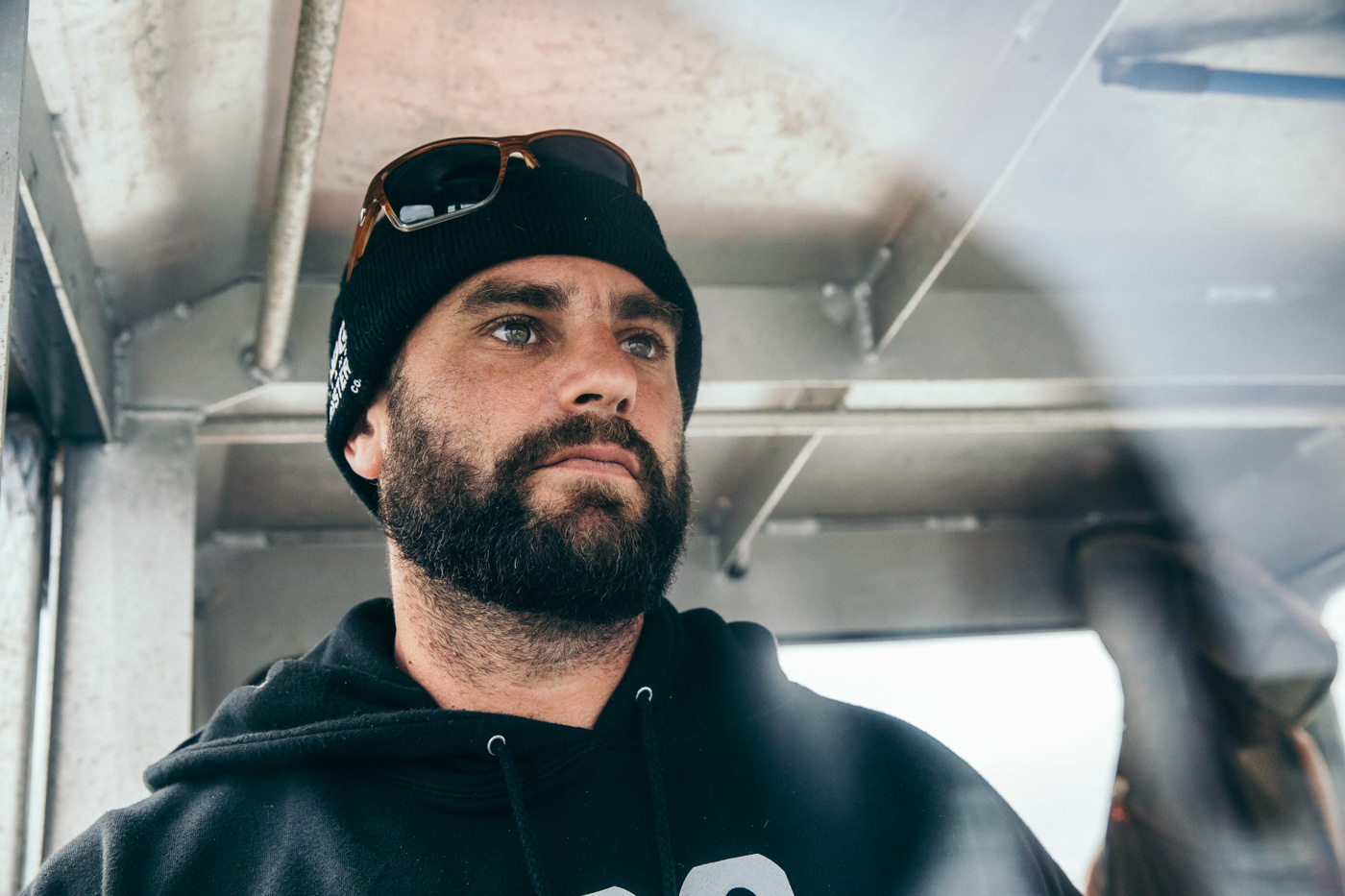
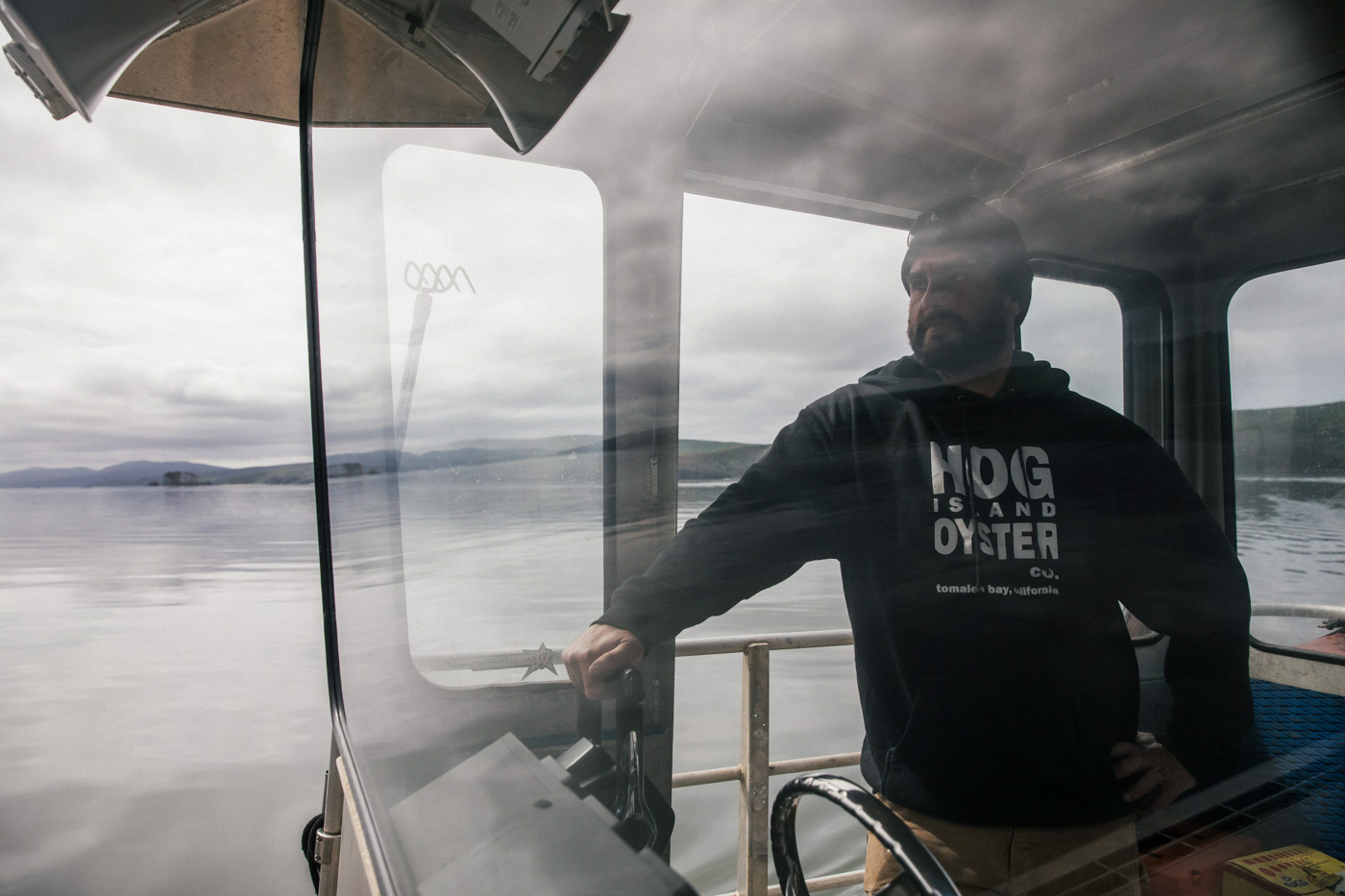
Types of Oysters Hog Island grows:
Pacific Oyster aka Hog Island Sweetwaters – “Pacific oyster is main species of oysters that we grow, originally from Japan” – Finger
Olympia Oyster – West Coast USA’s native oyster, from Washington. “Don’t grow big and take a long time to grow. Have a very metallic taste so they’re hard to grow commercially and market. That’s what is used for oyster restorations, since they don’t grow non-native species,” says Finger. Hog Island tried to cultivate these and eventually stopped––they’re too delicate and non-resilient.
Virginica aka Hog Island Atlantic’s – East coast species on the west coast. “These are my favorite. They have firmer meat and a brighter taste,” explains Finger.
Kumamoto – Plump, firm, rich, sweet, smaller and buttery. Finger calls them the perfect “summer oyster.”
Belon, aka French Hog – Originally from Brittany in France, these are rare outside of that region and hard to cultivate. They’re rounder, flatter, coppery, bold and meaty.
“We feel a responsibility to bring everyone along with us. Being a high demand product, there’s a lot of collaboration. We’re in a unique position, because we buy a lot of oysters from a lot of other farmers and sell baby oysters to others, so we’re doing a lot of business within the industry. So, we have a lot of incentive and influence to keep things moving well. There’s a lot of collaboration and sharing ideas in the oyster farming world.”
Finger also thinks this is the natural progression of any agricultural product. “I think most of the farmers, especially up in Washington,”––which we affectionately dub “Big Oyster,” as many of the larger, more industrial oyster companies are there–– “are moving towards a bag-culture, smaller-scale operation, gravitating away from the big shucking houses. Taylor Shellfish is a prime example of this. They’ve come a long way from their old methods and have even opened up oyster bars in Seattle, like we did in San Francisco, bringing the consumer directly to their product.”
In addition to working with other oyster farmers, they have their teeth in regulation and conservation efforts, too. One of their newer, primary efforts is contributing to research on ocean acidification. In addition to being named one of the first “Sustainable Shellfish Producers” by Food Alliance, Hog Island helped spearhead the California Shellfish Initiative, which they’re constantly working with to ensure smaller growers can get in the business––something increasingly difficult and expensive in heavily regulated California. Hog Island is also a registered B Corporation, alongside other socially responsible companies like Patagonia, Ben & Jerry’s, Etsy and Seventh Generation, meaning they’ve been certified to meet rigorous standards of social and environmental performance, accountability and transparency. On the ground, they’re actively working with several different initiatives in San Francisco bay in an effort to clean it up so they can farm oysters in the bay’s expanses.
The method used to clean the water? Oysters, of course. Finger informs me that a full-grown Pacific oyster can filter 40 gallons of water a day––a staggering amount, especially when considering the size of a single bivalve. With enough beds planted, it’s entirely possible for oysters alone to dramatically improve the bay’s water quality to the point its oysters will be suitable for human consumption.
So, in a way, the oyster is the perfect sustainable animal protein. When considering the resources that go into raising almost any other kind of animal, the oyster clearly wins out.
“You’d have to group oysters in with other shellfish,” Finger explains, “because most shellfish are filter feeders, are grown similarly, eat the same food, are processed similarly, and have low resource need. When I look at sustainable farming, I look at the energy that goes into the food. It’s either food or water. Look at cattle ranching. There’s a lot of feed that goes into it, depending on how you do it, and a lot of water that goes into it––to feed the cows, to wash them. Even with terrestrial farming, certain crops take a lot of water to grow. In fish farming, you have to feed the fish food. Conversely, we’re putting the oysters out here, they’re eating the natural plankton and algae that’s in the water and they’re cleaning the environment around them. And we use saltwater, mostly, for processing. Low resource, high protein.”
Hog Island is also in the process of growing its own enterprise. “We’re getting a farm permit in Humboldt Bay,” Finger reveals, and I later learn this includes a hatchery, meaning Hog Island will soon become a fully in-house spat-to-bar oyster operation. “We used to have a farm in Washington where we grew a great oyster, but we had lease issues and shut that down. We’ve talked about another farm in Washington and another in Mexico––that’s kind of my dream. I just want a reason to go fishing down there,” he laughs.
Finger admits there are environmentalists who disagree even with the way Hog Island does business––they think that Tomales Bay is too pristine of an environment to tolerate any human intervention, and advocate for full protection status. Finger thinks this is unrealistic, as there are humans on the planet, whether we like it or not, and they’re going to continue to eat seafood. He believes people need to have that “holy shit moment,” as he puts it, and realize it’s more prudent to find a better way to interact with the environment while feeding the earth at the same time.
This last point gets me thinking. If Tomales Bay is heaven for oysters, what else lives in it?
“Halibut, striped bass, anchovies, sardines, herring, sturgeon, a bunch of species of sharks,” Finger lists.
“Wow!” I say, my mind running and, admittedly, my mouth watering. “All of the delicious stuff.”
“Don’t tell anyone! As far as i’m concerned, there are no good fish in here,” he says with a wink.





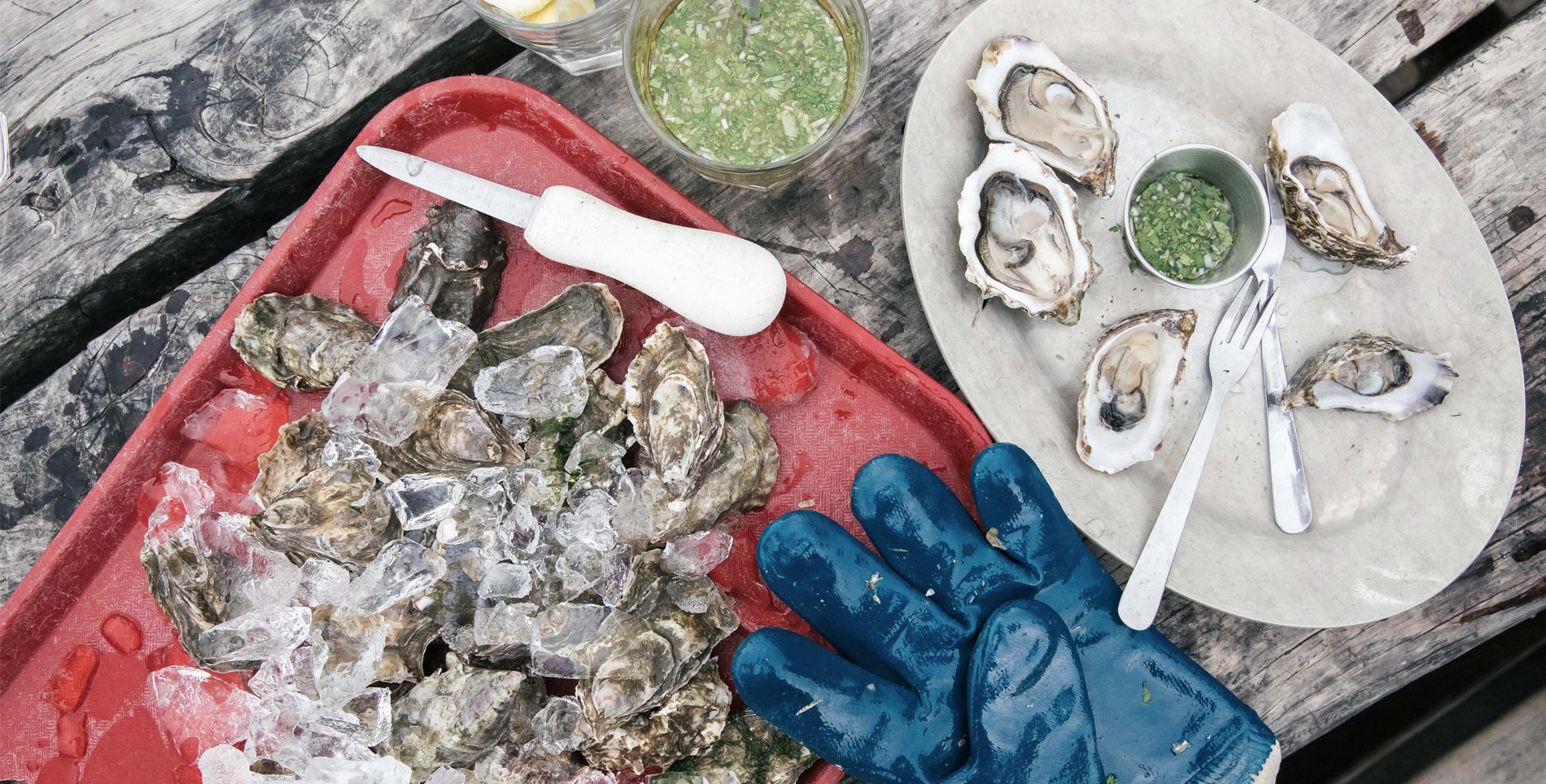

Our comments section is for members only.
Join today to gain exclusive access.